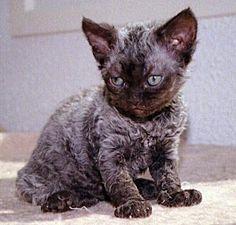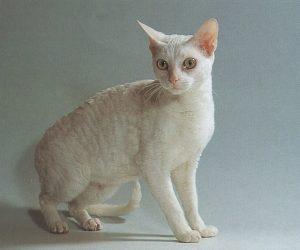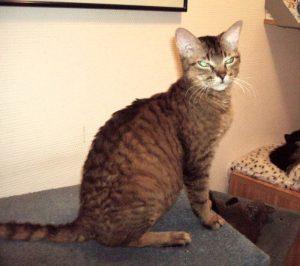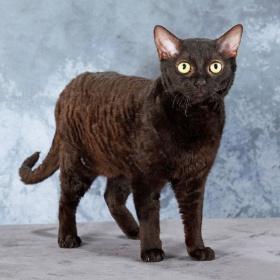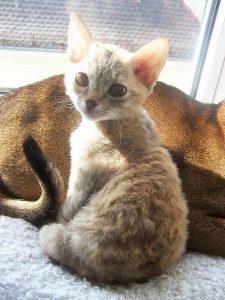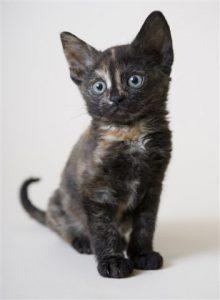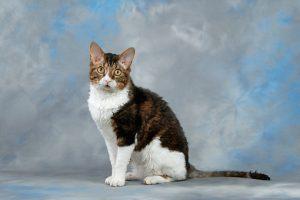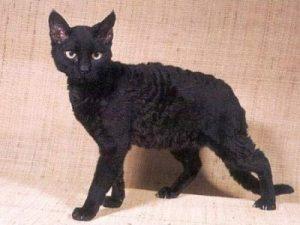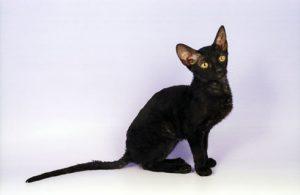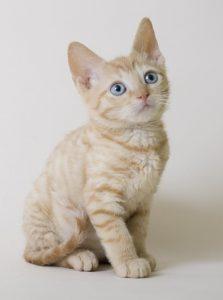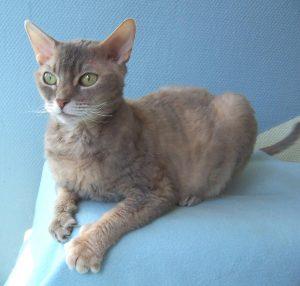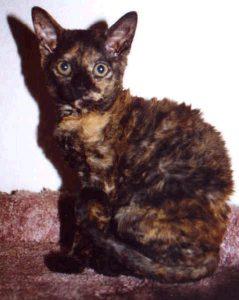German Rex
The German Rex is a domestic cat of medium length, having some resemblance with the popular Cornish Rex. It can be distinguished by its round head, large ears, watchful eyes, well-developed cheeks, and medium-sized, slender legs. A significant characteristic of this cat is its short, curly, and silky coat that has short awn hairs, which are thicker than its undercoat. This makes it look a lot woolier than the Cornish cat.
Quick Information
Physical Appearance & Size
| Weight: | 8 lbs in average |
Colors & Patterns
| Coat: | Short length, silky, curly |
| Color: | All shades of red, brown, fawn, blue, black, white, cinnamon, chocolate, champagne, seal |
| Coat Pattern: | Ticked, tabby, bi-color, colorpoint, tri-color |
Other Characteristics
| Other Names: | Rex |
| Group of Breed: | Domestic |
| Lifespan (Life Expectancy): | 9-14 years |
| Weight: | 8 lbs in average |
| Personality Traits: | Clever, friendly, playful |
| Shedding: | Minimal |
| Good with Children: | Yes |
| Vocalization (Noise): | Quiet |
| Hypoallergenic: | Yes |
| Country of Origin: | German Democratic Republic |
| Competitive Registration/Qualification Information: | FIFe |
History and Origin
Although there is a slight discrepancy about the history of Rex, most breeders trace its year of origin to 1951 right after the birth of the first Cornish kitten in 1950. Soon after World War II, the first Rex in the form of a female, black-colored feral cat was spotted by Doctor Rose Scheuer-Karpin.
She rescued the cat while it was wandering in the Hufeland Hospital gardens in East Berlin and named it Lammchen (a German word for lambkin). Like the Cornish Rex, Lammchen also had the curly-haired gene and gave birth to many litters. The first litter of Rex kittens was produced in 1957 when Lammchen was mated with one of its children.
As more German Rex kittens were produced over the years, two females called Marigold and Jet were transported to USA in 1960. They were soon followed by a black male called Christopher Columbus, which set the foundation for this breed in the US.
Temperament
These cats have a pleasant and outgoing personality that helps to brighten up any dull moment. They are sociable and can easily mingle with everyone, including adults, children, and even with other household pets. Even though they are energetic and active, they have great patience. The Rex cats show extreme loyalty and enjoy their owner’s company. They like being cuddled and caressed, as they lie down relaxed.
Care
The German Rex cats need occasional grooming to keep their coat healthy and shiny. Light and gentle brushing once or twice a week helps to remove dead hairs and ensures that their curly hair is not damaged.
Their coat is known to become greasy, thus they should be bathed more often than other breeds. Bathing with a mild shampoo is good for their sensitive skin and keeps away various infections. To dry their coat, you can use a towel to wrap them soon after bathing. Also, check their ears for waxy deposits and clean them whenever needed.
As they are extremely hygienic, they hate to use an untidy and smelly litter box. Use a mild detergent to clean their litter box and replace it once a week.
In general, this is a healthy breed with no major health issues. However, it may sometimes suffer from some common hereditary diseases like hypertrophic cardiomyopathy, which usually causes heart diseases. Deal with this issue by taking your pet to an experienced vet. The Rex cat may also be affected by diarrhea, eye problems, and infections caused by fleas.
Athletic and active by nature, this cat loves to play, run, and jump. It needs plenty of room for exercise to maintain its ideal weight and to keep the strength of muscles. Playing interactive games such as games of fetch also keeps it stimulated both mentally and physically. Short spells of exercise for around 10-15 minutes several times daily is good for your pet.
Training
Because of its high intelligence level, the German Rex can quickly grasp its training and develop new habits. Make sure you provide it some basic training to develop general manners needed to be a family pet. You can also train it to learn acrobatic tricks.
Feeding
Unlike some other pets, these cats do not like to eat the leftovers of their owners. They are somewhat choosy about the food they eat, thus introducing them to new foods should be done cautiously and in small quantities throughout several days. Give a quality dry kibble that can provide your pet with all the essential nutrients. Make sure they get enough fresh drinking water every day. Avoiding milk is the best option, but should you decide to give them milk, check with a vet.
Interesting Facts
- Until the 1980s, these Rex cats took part in shows and contests in their native land, but now they exist in small numbers.
- Their coat is unusual due to the fact that it does not have any guard hairs.
- Those Rex cats with lighter coat colors usually need sun blocks on their ears to avert sunburn during the summer months.

